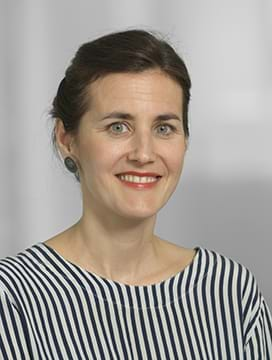Fewer young professionals in Denmark’s corridors of power
A new statement from the Confederation of Danish Industry (DI) shows that the number of private-sector executives over the age of 50 and 60 is on the increase. The experience of those more senior leaders is clearly a strength, but they also need to understand the thirst for development among young professionals. That is the opinion of DI.
Since 2010, the proportion of private-sector executives over the age of fifty has risen from 35% to 44%. The increase is more or less entirely due to the fact that the number of managers under the age of 40 has dropped significantly. These are the findings of a new statement compiled by DI’s Department for Labour Market Policy on the basis of data from Statistics Denmark.
This development comes as a surprise to Kinga Szabo Christensen, Director for Leadership Development and Productivity at DI.
“I was somewhat surprised when I saw the figures. I hadn’t expected such a significant development. It’s probably due to the fact that there are many younger leaders who are extremely visible in the media. That means the media may easily be contributing to a slightly distorted picture of what a typical leader is,” she says.
Today, leadership is much more about encouraging the skills and abilities of employees. Kinga Szabo Christensen, Rådgivningsdirektør
Kinga Szabo Christensen believes there are several possible explanations as to why there are more leaders over the age of 50. The proportion of senior executives over the age of 60 has increased from 10.4% to 12%.
For one thing, people in general are living longer. In addition, an increasing number of people continue working, which also makes an impact at management level.
“There’s no doubt that the fact that society in general is getting older also has an effect on leadership,” she says.
See also: 31-Year-Old Leader: My Lack of Experience Has no Impact on my Confidence
“Why stop when you’re having fun?”
The DI study also shows that, between 2010 and 2016, the average age of managers rose from 45.7 to 47.7.
The Danish Association of Managers, which represents 108,000 members in management positions, agrees that there are more grey-haired leaders these days.
“There are a large number of leaders who want to continue working in the belief that they still have something to contribute. In our opinion, that’s extremely positive. The fact that more people continue working is also good for the economy,” says Kim Møller Laursen, Head of Analysis for the Danish Association of Managers.
He expects the number of older leaders to increase even further in the years to come, because more of them will have the desire and capacity to continue. Managers with experience are also an advantage, because they have already dealt with several different situations.
“Not to say that one type of leader is necessarily better than another. What it’s really about is having diversity at management level,” says the Head of Analysis.
But older leaders also have a lot of advantages. Above all, they have more life experience and equanimity. Kinga Szabo Christensen, Rådgivningsdirektør
See also: French frontrunner will inspire danish women
The role of leader has changed
But is the age of a leader remotely important?
“To an extent,” thinks Kinga Szabo Christensen. She explains: “Even though the role of leader is principally the same, age naturally plays a role in all human relationships. That also applies to the relationship between an employee and a manager.”
According to Kinga Szabo Christensen, it is often leaders who have been in their positions the longest who change their ways of thinking to match the needs of the younger generation.
“In the old days, the manager was usually more qualified than his or her staff. It was specialists with the strongest professional skills who were promoted to leadership positions. Their core competency lay in the fact that they knew their field better than anyone else. Today, leadership is much more about encouraging the skills and abilities of employees,” she says.
“This is particularly true at a time when new generations have a new set of demands vis-à-vis their leaders. Leaders are regarded as authority figures far less than they used to be,” says Kinga Szabo Christensen.
“The younger generation expects managers to concentrate on the development and training of their staff. Consequently, the role of a manager is about creating the right context for training, in which employees can thrive and develop, and benefit both themselves and the organisation,” she says.
“But older leaders also have a lot of advantages. Above all, they have more life experience and equanimity. They have already been through countless situations.”
See also: Professor: Maternity leave hinders women’s careers in Denmark


